What Do You Paint Watercolors On
You know what ?
Watercolor paper isn't the only surface you can paint on !
Yep… That's right !
In fact one of the most common questions I see asked by artists is:
"Can you use watercolor on canvas" ?
The quick answer is "yes". But of course it's slightly more complicated than that. There a few things you need to know about using canvas as a support for watercolor paintings.
I was curious about using canvas myself and I thought this would be a great opportunity to try out this alternative to traditional watercolor paper.
Below I'll tell you everything I learned and hopefully all you need to know about using canvas with watercolor !
What is watercolor canvas ?
Traditionally watercolors are painted on watercolor paper.
Watercolor paper is an absorbent support. Watercolor paints are a medium which depend on the paper to partially absorb and fix the paint to the surface and also the underlying paper fibers.
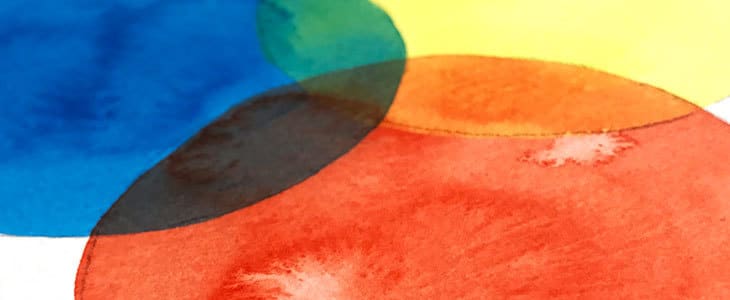
Canvas, on the other hand, is more commonly used for oils or acrylics.
These kind of paints are usually applied to a non-absorbent ground where all the paint stays on the surface.
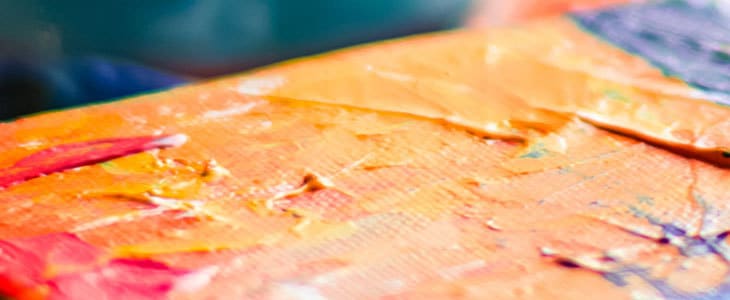
The bottom line ?
In simple terms, if you want to use canvas for watercolor painting you need to change the nature of it's surface from non-absorbent to absorbant.
A "watercolor canvas" is simply a canvas which has been specially prepared to accept the watery nature of the paints. Watercolor canvas has a modified surface finish which helps absorb the paint in a similar way to paper.
The different types of watercolor canvas
Perhaps you're already familiar with canvas and you like it's appearance and texture, but you also want to work in watercolors. Or maybe you're just curious to know if traditional canvas makes a good alternative to paper.
So what are your options ?
There are a couple different ways you can take advantage of canvas to paint with watercolors:
- Use a ready-to-paint watercolor canvas
- Prime a standard canvas with watercolor ground
Watercolor-ready canvases
These commercially available canvases are a relatively new invention. This is a special kind of canvas which has a unique gesso coating designed to accept watercolor paints. The brand Fredrix Canvas have a range of products available in three formats:
- Pre-stretched canvas
- Canvas boards
- Canvas pads
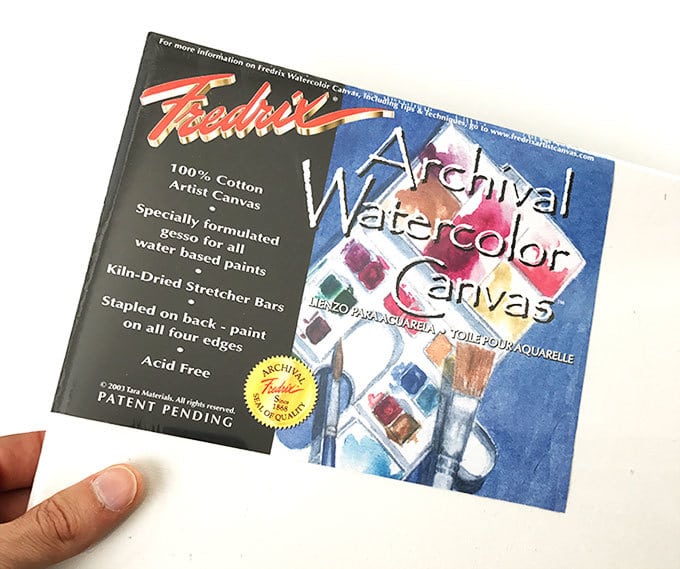
In fact Fredrix seem to be the only worthwhile manufacturer of this kind of product. I found some other European products but from what I found, they don't appear to be very good quality.
These canvases have a similar kind of tooth to normal fabric canvases. The texture is very fine which makes it relatively easy to apply watercolors.
If you're accustomed to working on watercolor paper then you may be a little surprised at first. You need to adjust your technique slightly to accommodate the quirks of the canvas finish, a bit like when you use a new type of paper for the first time. The flow characteristics of the surface are different - it just takes a bit of getting used to !
There are some interesting advantages to using canvas for watercolor painting.
Here are the pros and cons:
The characteristics of watercolor canvas
The first thing you will probably notice is that the paint tends to rest on the surface much longer giving you more time to play with the paint. This is because Watercolor canvas is not as absorbent as watercolor paper.
It's almost like using hot pressed watercolor paper.This makes watercolor canvas great for wet on wet techniques for example.
The second most noticeable difference is the way canvas allows you to lift dry watercolor paint. Watercolor canvas has much more lifting capability than paper, even when the paint is completely dry.
The technique of lifting watercolor means removing some of the paint off the surface. this is usually done using a small amount of clear water with brush, sponge or tissue. Gently rubbing the surface of the paint will remove some of the pigment.
The advantage is that you don't need to reserve whites quite in the same way as when you use traditional paper. The lifting doesn't go back completely to white, but you can certainly make a lot of adjustments and more easily correct mistakes. This makes canvas easy for adjusting tones. If you want to change the value of part of your painting, you can easily scrub back and then build up your paint again, without damaging the surface. This is impossible with normal watercolor paper.
This same easy lifting capability can also be a slight disadvantage if you do a lot of glazing. You need to be careful when laying down new layers of paint, even when the first glaze is dry. A fresh glaze needs to be applied quickly to avoid the underlying layer from lifting and mixing with your new glaze. This is something you don't encounter with watercolor paper. Again you just need to adjust your technique to accommodate the characteristics of the canvas.
If you do a lot of glazing, this surface might not be to your liking.
The canvas has the advantage of being quite durable and difficult to tear. Sketching outlines is also easy and you can erase mistakes without altering the quality of the surface.
As mentioned above, the Fredrix range comes in different formats, but I think the real advantages come from the pre-stretched canvas. Indeed, the canvas doesn't warp or buckle like unstretched watercolor paper. The canvases come in standard sizes and you don't even have to frame your paintings under glass! Just remember to apply a layer of varnish to fix the finished painting.
The canvas is 100% cotton and "acid free" which gives the canvas good archival qualities. This is the same kind of characteristic you should look for when buying watercolor paper. Acid is the biggest threat to the durability of your finished paintings.
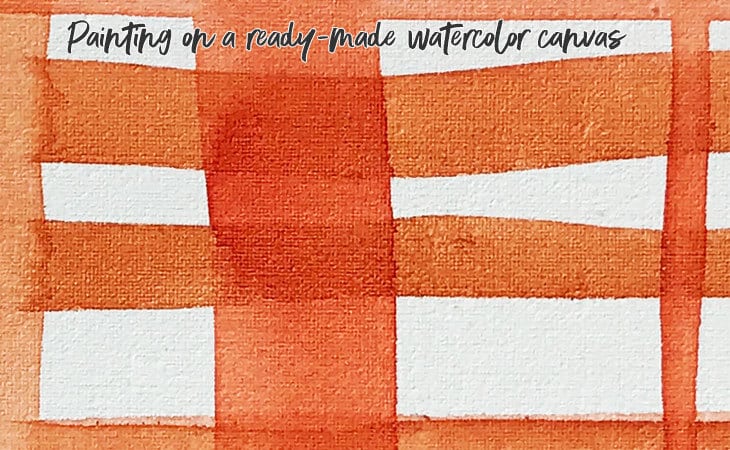
I was quite impressed by these ready to go watercolor canvases. They certainly offer a quick and easy solution compared to prepping your own canvases, and are a great option if you only work occasionally on this type of support.
How do you prepare a canvas for watercolor?
One of the more common ways to use watercolor on canvas is to prepare the surface of an ordinary canvas so that it becomes more absorbent.
Standard artist's canvas can be given a number of coats of "watercolor gesso" or "watercolor ground" to make them ready for painting with watercolors.
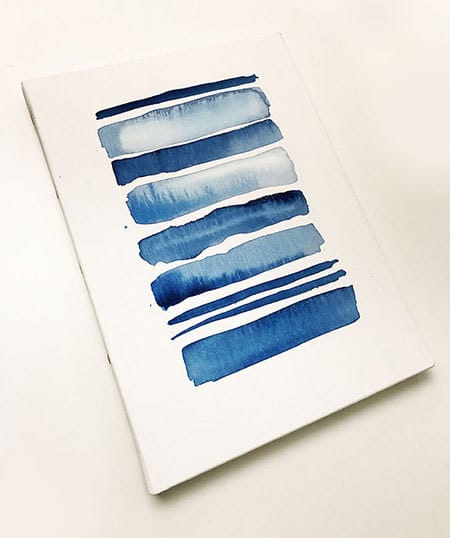
Watercolor ground is a special liquid coating which can be used to prepare any surface that you wouldn't normally be able to paint on with watercolors.
Yes… You can even use this substance to prep wood, metal, stone or just about anything you fancy! It creates an absorbent surface with a kind of satin texture, ready for watercolor paints.
There are various manufacturers of watercolor ground. For example, Daniel Smith offer different colors of ground. I tested the "Transparent" and the "Titanium White" versions.
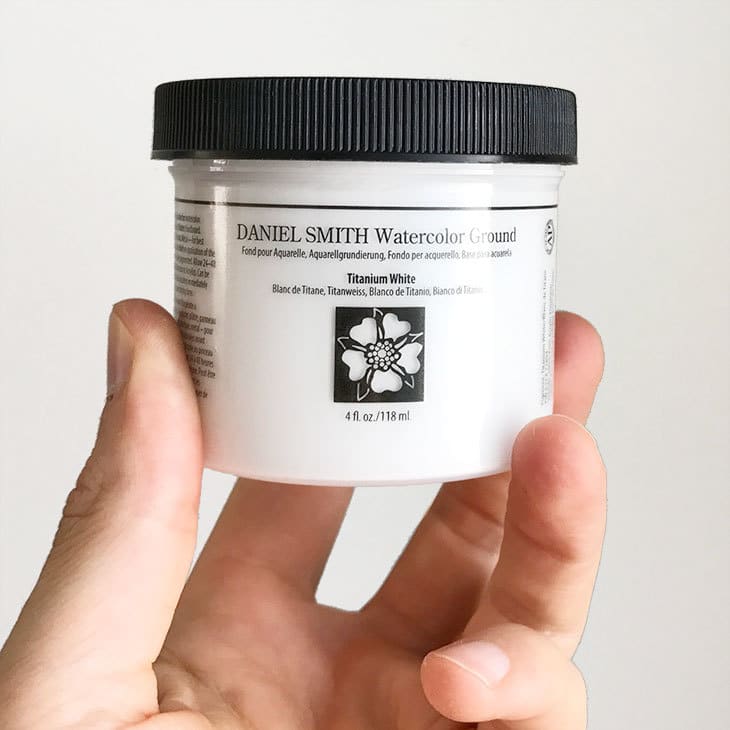
You simply coat the surface of your standard canvas with a thin layer of the ground and wait for it to dry. I see a lot of artists applying several layers, but I didn't find this was necessary. Also, if you apply the ground too thickly, or use too many layers, you lose the texture of the original canvas, which I think defeats the purpose !
Apply one coat of ground in a smooth layer. There's no need to dilute the ground. You might get some lumps, but a trick I found was to go over the coat of ground with a brush loaded with clean water. This seems to smooth out the lumps.
Whatever you do, don't use your good quality brushes ! A cheap flat bristle brush is fine.
The ground dries in a few hours, but it's recommended to let the ground dry for 24 hours to achieve the right degree of absorption.
The advantage of this kind of product is that you can prepare several canvases, so it's quite an economical solution.
I've seen some artists using grounds which add texture to the surface. This is supposed to simulate the textured finish of cold pressed watercolor paper. A word of warning with this kind of product - the textured surface makes it quite difficult to control brush stokes and fine detail is tricky to achieve.
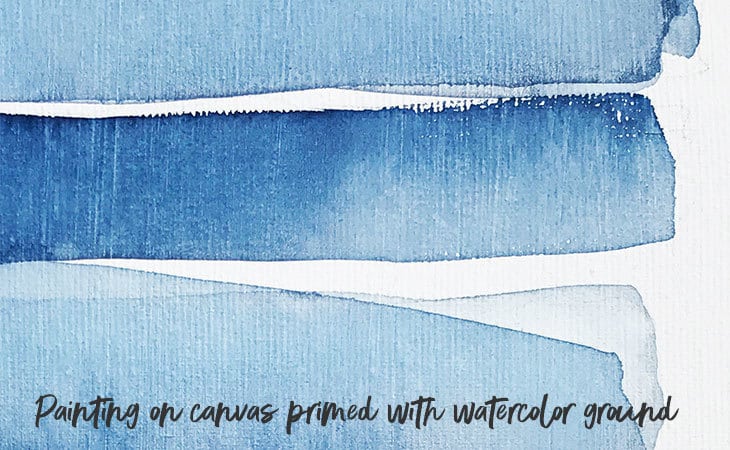
The characteristics of watercolor ground on canvas
The properties of canvas primed with watercolor ground is very similar to the ready-made watercolor canvas I tried.
The surface remains wet for longer so the flow of pigment can be moved around and played with more than watercolor paper.
You can lift out paint and go back to lighter tones in the same way and tones can be adjusted by scrubbing back with a damp brush. Once again lifting makes glazing difficult.
One thing I did find is that edge details were a little harder to control. Absorbent ground seems to have a tendency to bloom when laying fresh washes, and there's some bleeding at the edges with the absorbent ground.
Watercolor ground has another benefit for everyday watercolor work. You can use it to correct mistakes which would otherwise be difficult to do on watercolor paper. A thin layer takes you back to a surface like paper so you can repaint or repair flaws in your work.
Watercolor paper vs canvas
The surfaces you paint on are the foundation, the source of light and brightness of your paintings. The transparent nature of watercolors is best suited to a light toned surface, but the texture of the surface adds character and richness to your artwork.
Watercolor paper or canvas both bestow a distinctive grain to the painting surface.
Here's a quick comparison of the two substrates:
Watercolor canvas:
- The surface of watercolor canvas stays wet slightly longer giving you more time to manipulate and play with your paint.
- Dry layers of paint can be lifted very easily making corrections and adjustments simple.
- Using watercolor ground you can use any normal canvas and turn it into a surface that accepts watercolors.
- The easy lifting properties of canvas make it difficult to glaze. You need to work quickly to avoid underlying layers mixing.
- It can be difficult to get hard crisp edges.
- Pre-stretched canvas doesn't curl or warp and you don't have to frame your paintings
- Canvas is hard-wearing and resilient.
Watercolor paper:
- Watercolor paper has been the established support for water based media for centuries, and for good reason.
- It perfectly absorbs the paint and helps fix the pigments to its surface.
- Paper is well adapted to any style or technique of watercolor painting making it the most versatile kind of surface for watercolor. This includes Glazing of course, which is a fundamental technique on watercolor paper.
- Comes with a variety of textures each with more or less pronounced tooth.
- Hard edged details are easy to achieve.
- Lifting is also possible with watercolor paper, but more so with hot pressed than cold pressed.
- For best results paper needs stretching before painting.
- Artist quality watercolor paper is "archival" and acid-free so your paintings will last for generations to come !
How about doing your next watercolor on canvas ?
Whichever way you choose to use canvas, it's relatively inexpensive and contributes a unique texture to your finished work.
Using canvas as a support for watercolors is a very different experience to conventional watercolor paper. There's a bit of a learning curve when you first try using canvas when you're accustomed to paper. But canvas is fun to use - it's easy to manipulate the paint even when dry - and lifting paint off the surface is incredibly easy compared to paper.
I suggest you treat your first canvas paintings purely as an experiment and see if you like the properties of a canvas surface.
Above all, have fun with it !

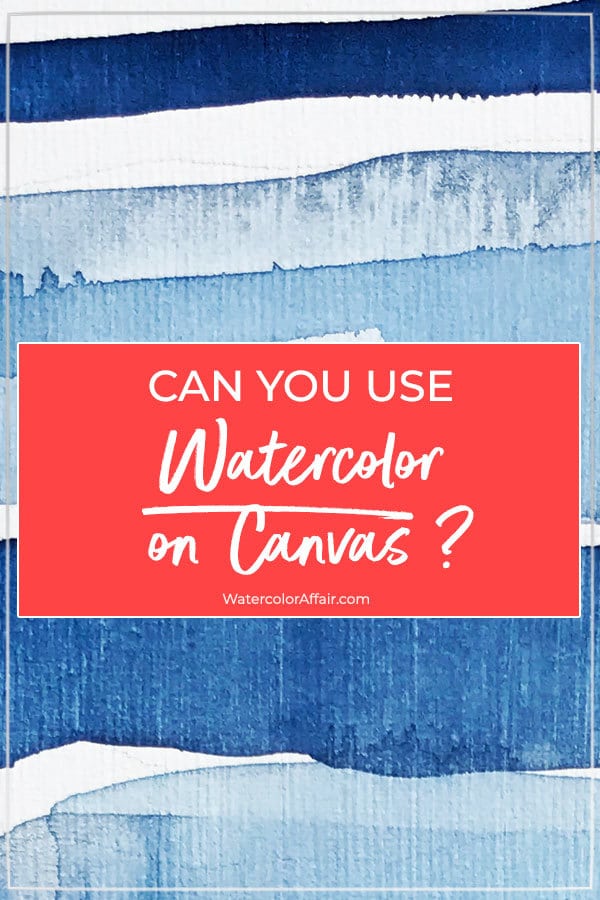
Like This ? Share in on Pinterest!
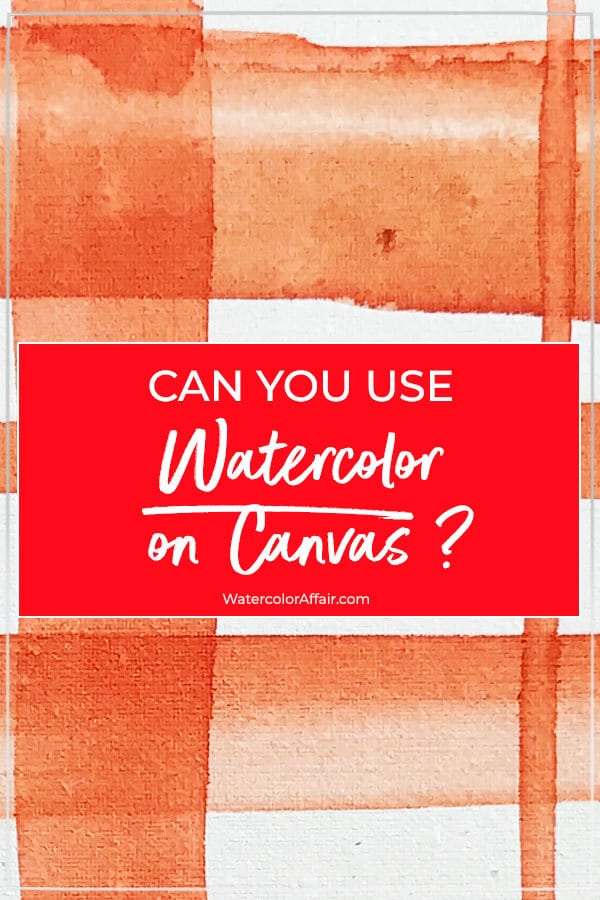
What Do You Paint Watercolors On
Source: https://www.watercoloraffair.com/can-you-use-watercolor-on-canvas/
Posted by: dominguezwhiliver.blogspot.com

0 Response to "What Do You Paint Watercolors On"
Post a Comment